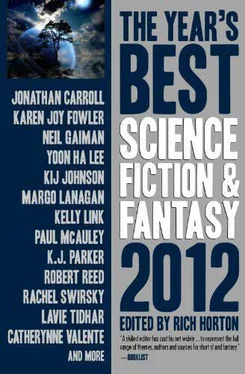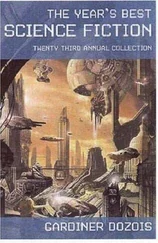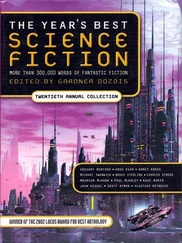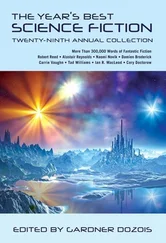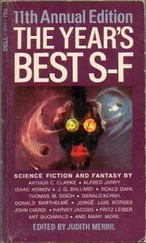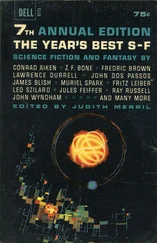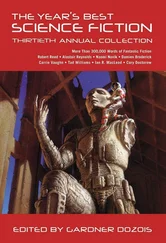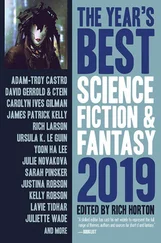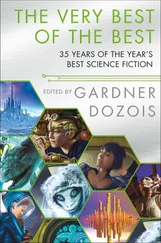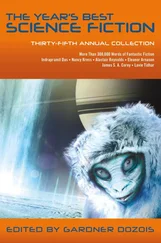The major print magazines mentioned above— Asimov’s, Analog, F&SF, and Interzone —continued much as before, with slowly dwindling circulations. However, anecdotal reports suggest that electronic sales are helping the magazines a great deal. More and more the smaller ’zines are moving to the web— Electric Velocipede moved there this year, and Kaleidotrope announced that from 2012 they would be web-based. Black Gate, On Spec, Shimmer, Not One of Us, and Lady Churchill’s Rosebud Wristlet survive in print, as does Weird Tales, though the latter changed directions again. After a few quite interesting years under new editor Ann VanderMeer, including two more issues in 2011, the magazine was sold to Marvin Kaye, who explicitly expressed his interest in returning the magazine to its roots, in a sense, or at least to the Weird Tales of just a few years ago. VanderMeer’s version was energetic and intriguing—yet definitely still “weird,” and still engaged with such traditional Weird Tales concerns as the Cthulhu Mythos. The one issue of Kaye’s magazine that I saw was not terribly promising, though it will be only fair to give it some time.
Obviously I think highly of the online places I plucked stories from: Clarkesworld, Lightspeed, Fantasy, Tor.com, Subterranean, and Strange Horizons. Other worthwhile online ’zines include Orson Scott Card’s Intergalactic Medicine Show, Beneath Ceaseless Skies, Abyss and Apex, Ideomancer, Chiaroscuro, Apex, and Heroic Fantasy Quarterly, as well as two strong new sites, both of which debuted in 2010: Daily Science Fiction and Redstone Science Fiction.
The list of original anthologies from which I chose stories is a good start in covering the best such books of 2011: Down These Strange Streets,edited by Gardner Dozois; Teeth,edited by Ellen Datlow and Terri Windling; Blood and Other Cravings,also edited by Datlow; Eclipse 4,edited by Jonathan Strahan; another Strahan book: Life on Mars; Steampunk!,edited by Kelly Link and Gavin Grant (both of whom also have stories in this book!); and Fables from the Fountain,edited by Ian Whates. Ellen Datlow had another really outstanding year: besides the two books mentioned above, her books Naked Cityand Supernatural Noirwere first rate. Jack Dann and Nick Gevers edited a fine collection of ghost stories with a steampunk flavor: Ghosts by Gaslight.Jonathan Strahan’s Engineering Infinitywas a strong collection of hard SF—so too was TRSF,a magazine-like collection of near future short stories published through MIT’s Technology Review and edited by Stephen Cass. Another fine SF-oriented book was Ian Whates’s Solaris Rising.And William Shafer gave us another nice dark fantasy anthology in Subterranean: Tales of Dark Fantasy 2.The one theme one might extract from this list is that the commercial power of the urban fantasy and paranormal subgenres at novel length extends to short stories.
As ever, I’ll suggest that one of the best ways to understand the real state of the SF and fantasy field is to read the best stories! So I’ll leave that task to you—enjoy!
It is not true that the dead cannot be folded. Square becomes kite becomes swan; history becomes rumor becomes song. Even the act of remembrance creases the truth.
What the paper-folding diagrams fail to mention is that each fold enacts itself upon the secret marrow of your ethics, the axioms of your thoughts.
Whether this is the most important thing the diagrams fail to mention is a matter of opinion.
“There’s time for one more hand,” Lisse’s ghost said. It was composed of cinders of color, a cipher of blurred features, and it had a voice like entropy and smoke and sudden death. Quite possibly it was the last ghost on all of ruined Rhaion, conquered Rhaion, Rhaion with its devastated, shadowless cities and dead moons and dimming sun. Sometimes Lisse wondered if the ghost had a scar to match her own, a long, livid line down her arm. But she felt it was impolite to ask.
Around them, in a command spindle sized for fifty, the walls of the war-kite were hung with tatters of black and faded green, even now in the process of reknitting themselves into tapestry displays. Tangled reeds changed into ravens. One perched on a lightning-cloven tree. Another, taking shape amid twisted threads, peered out from a skull’s eye socket.
Lisse didn’t need any deep familiarity with mercenary symbology to understand the warning. Lisse’s people had adopted a saying from the Imperium’s mercenaries: In raven arithmetic, no death is enough.
Lisse had expected pursuit. She had deserted from Base 87 soon after hearing that scouts had found a mercenary war-kite in the ruins of a sacred maze, six years after all the mercenaries vanished: suspicious timing on her part, but she would have no better opportunity for revenge. The ghost had not tried too hard to dissuade her. It had always understood her ambitions.
For a hundred years, despite being frequently outnumbered, the mercenaries in their starfaring kites had cindered cities, destroyed flights of rebel starflyers, shattered stations in the void’s hungry depths. What better weapon than one of their own kites?
What troubled her was how lightly the war-kite had been defended. It had made a strange, thorny silhouette against the lavender sky even from a long way off, like briars gone wild, and with the ghost as scout she had slipped past the few mechanized sentries. The kite’s shadow had been human. She was not sure what to make of that.
The kite had opened to her like a flower. The card game had been the ghost’s idea, a way to reassure the kite that she was its ally: Scorch had been invented by the mercenaries.
Lisse leaned forward and started to scoop the nearest column, the Candle Column, from the black-and-green gameplay rug. The ghost forestalled her with a hand that felt like the dregs of autumn, decay from the inside out. In spite of herself, she flinched from the ghostweight, which had troubled her all her life. Her hand jerked sideways; her fingers spasmed.
“Look,” the ghost said.
Few cadets had played Scorch with Lisse even in the barracks. The ghost left its combinatorial fingerprints in the cards. People drew the unlucky Fallen General’s Hand over and over again, or doubled on nothing but negative values, or inverted the Crown Flower at odds of thousands to one. So Lisse had learned to play the solitaire variant, with jerengjen as counters. You must learn your enemy’s weapons, the ghost had told her, and so, even as a child in the reeducation facility, she had saved her chits for paper to practice folding into cranes, lilies, leaf-shaped boats.
Next to the Candle Column she had folded stormbird, greatfrog, lantern, drake. Where the ghost had interrupted her attempt to clear the pieces, they had landed amid the Sojourner and Mirror Columns, forming a skewed late-game configuration: a minor variant of the Needle Stratagem, missing only its pivot.
“Consider it an omen,” the ghost said. “Even the smallest sliver can kill, as they say.”
There were six ravens on the tapestries now. The latest one had outspread wings, as though it planned to blot out the shrouded sun. She wondered what it said about the mercenaries, that they couched their warnings in pictures rather than drums or gongs.
Lisse rose from her couch. “So they’re coming for us. Where are they?”
She had spoken in the Imperium’s administrative tongue, not one of the mercenaries’ own languages. Nevertheless, a raven flew from one tapestry to join its fellows in the next. The vacant tapestry grayed, then displayed a new scene: a squad of six tanks caparisoned in Imperial blue and bronze, paced by two personnel carriers sheathed in metal mined from withered stars. They advanced upslope, pebbles skittering in their wake.
Читать дальше
